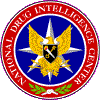
|
National
Drug Intelligence Center New York/New Jersey High Intensity Drug Trafficking Area Drug Market Analysis June 2007 Illicit FinanceThe NY/NJ HIDTA region's immense financial infrastructure and expansive level of economic activity provide an environment ideal for the laundering of illicit funds; DTOs in the United States and abroad exploit this vast infrastructure to launder money. New York City is one of the world's principal financial centers and the economic capital of the United States, as well as a central market for the international jewelry and precious metals industries. The El Dorado Task Force (see Appendix A) estimates that each year between $4 billion and $8 billion in illicit drug proceeds are laundered by drug traffickers using financial institutions in the New York metropolitan area. Traffickers use the many international banks located in the HIDTA region to facilitate money laundering activity through worldwide correspondent banking. A bank in the United States cannot transmit a payment directly to a foreign bank unless the U.S. bank has a correspondent account or an overseas branch in that country. Many of the largest international banks are located in the HIDTA region and serve as correspondents for thousands of other banks worldwide. Traffickers exploit this situation by placing funds in U.S. banks and banks located in countries throughout the world, usually by "smurfing,"22 and then amassing the funds in U.S. accounts of the international banks in New York City. This method allows traffickers to leave a seemingly legitimate paper trail, minimizing suspicion. Moreover, funds sent through several correspondent accounts are more difficult for investigators to track because bank secrecy laws in place in many foreign countries further shield traffickers from law enforcement scrutiny. The Association of International Bank Auditors in New York reports that at least 100 foreign banks are operating in New York City. This number does not include the U.S. banks with correspondent accounts or overseas branches. Other methods commonly used by traffickers to move and launder illicit funds through the HIDTA region include electronic wire transfers, smurfing, the Black Market Peso Exchange (BMPE), and bulk cash smuggling. Mexican DTOs in particular prefer to move funds through bulk cash smuggling. Drug traffickers in the HIDTA are increasingly laundering funds through money orders as well. Money launderers are also exploiting privately owned automated teller machines (ATMs) for illicit purposes in the NY/NJ HIDTA region. Privately owned ATMs are becoming more popular in the area and are appearing in bars, restaurants, delis, gas stations, and other businesses throughout the HIDTA region. Money launderers can purchase one or more machines and load them with drug funds. As cardholders use these machines to make withdrawals, the electronic transaction debits the cardholders' accounts and credits the ATM owner's bank account. At the end of each month, the owner has a genuine bank statement showing money being electronically deposited into his account from a legitimate financial institution. The recent proliferation of privately owned ATMs and the lack of regulatory measures used to monitor them makes these machines extremely vulnerable to misuse by criminals. Money launderers can acquire and operate their own network of ATMs and assert total control over the withdrawal process with little or no actual movement of cash. Stored value cards are increasingly being used by traffickers to launder funds in the HIDTA region. Resembling traditional credit or debit cards, stored value cards can be used by traffickers to access both global debit and ATM networks. Funds can be prepaid by one person in any denomination and withdrawn by another individual at ATMs anywhere in the world. These cards provide a convenient way to launder money because they are an easily transportable and virtually anonymous way to store and access cash. Moreover, stored value card programs often accept applications without face-to-face verification of cardholder identity, allowing money launderers to operate with relative anonymity. End Note22. Smurfing is the act of depositing amounts just below the threshold required for banks to report the transaction as suspicious. |